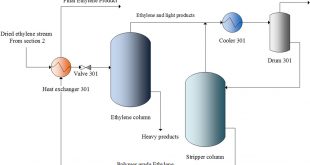Generally, materials will degrade over time due to fatigue, environmental conditions, or damage incurred during operation. Repair of certain materials during their lifecycle (especially those with structural functions such as concrete) can be very expensive and labour intensive. Therefore Scientists began developing self-healing materials , those artificial (synthetic) substances that …
Read More »Novel materials for 3D printing enabling high-performance parts optimized for strength, stiffness, and damage tolerance.
3D printing or additive manufacturing is ongoing revolution in manufacturing with its potential to fabricate any complex object and is being utilized from aerospace components to human organs, textiles, metals, buildings and even food. 3D printing is also revolutionizing defence by printing small components to full drones on naval vessels, …
Read More »DARPA AWE to provide Drinking Water extracted from Air , on Demand to soldiers in battlefield
It is estimated that around four billion people on the globe suffer from water scarcity. Distribution and production of fresh water and the control over water sources are potential cause for conflicts. Therefore, researchers are investigating new ways of freshwater production and the improvement of existing techniques. Potable water …
Read More »lubricants for electric vehicles and hybrids
Transport is responsible for around 23% of energy-related carbon dioxide emissions globally. This is expected to double by 2050. Motor vehicles also put a burden on society, especially in urban environments where they are chiefly responsible for noise and air pollution. Electric vehicles (EVs) have been considered as critical technology for …
Read More »Gallium Nitride technology enabling IoT revolution, Cellular 5G , Optoelectronics and sensors
Integrated circuits and power devices utilized by the semiconductor industry for the production of advanced computers, consumer electronics, communication networks, and industrial and military systems have been almost exclusively based on silicon technology. The requirements of future electronics place a great emphasis on achieving new devices with greater power density …
Read More »U.S. DOE ULTIMATE program developing Ultra-High Temperature Materials for efficient gas turbine in aviation
The jet engine is the most complex element of an aircraft and one of the most complex human-made products ever developed, housing thousands of individual components — and ultimately determining fuel efficiency for aircraft All turbines operate on similar principles: A gas or other fluid turns a rotor, which …
Read More »Single-crystal turbine blade technology for aero engines, dominated by US now mastered by China and India
In 2018, The American Society of Mechanical Engineers (ASME) named the Pratt & Whitney single crystal turbine blade an historic mechanical engineering landmark. These blades, which can be found in many modern, high-performance gas turbines (a.k.a. jet engines)—including the ones powering the F-22 Raptor, and larger electricity-producing turbines—are grown from a …
Read More »Superconducting (SC) materials enable light-weight and energy efficient electric propulsion system for Aircrafts, ships and satellites to future interplanetary missions
A new power revolution is going on in orbit – that of electrical propulsion for satellites. An ion thruster is a form of electric propulsion used for spacecraft propulsion. It creates thrust by accelerating ions with electricity. As the ionised particles escape from the aircraft, they generate a force moving …
Read More »Bio-ethylene (bio-based ethylene)
Ethylene is a hidden organic chemical that is crucial to modern human life. It is hidden because it is a precursor to products used in most households worldwide but not sold directly to consumers. For example, ethylene is the chemical base for polyethylene (PET) bottles, car parts, buckets, pipes, and …
Read More »Metal 3D Printing
Additive manufacturing (AM), broadly known as 3D printing, is transforming how products are designed, produced, and serviced. AM enables on-demand production without dedicated equipment or tooling, unlocks digital design tools, and offers breakthrough performance and unparalleled flexibility across industries. Metal 3D printing is considered the apex of all 3D …
Read More » International Defense Security & Technology Your trusted Source for News, Research and Analysis
International Defense Security & Technology Your trusted Source for News, Research and Analysis







